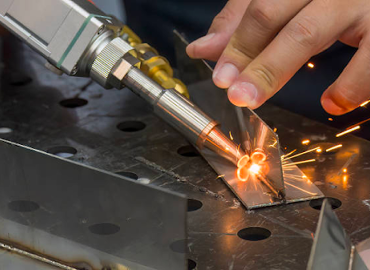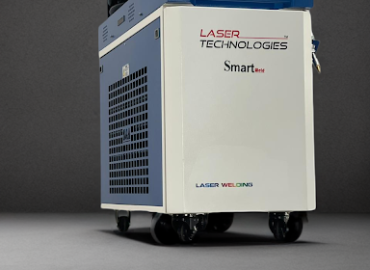Fibre laser cutting is indeed a versatile and efficient solution for various cutting applications. It utilizes a high-power fibre laser to generate a focused laser beam that can cut through a wide range of materials with precision and speed. Whether you are working with metals, plastics, or other materials, fibre laser cutting is the ideal choice.
While fibre laser cutting has many benefits, it's important to evaluate the material thickness, level of precision required, and production volume to see if it's the best option for your particular application. Consulting with laser cutting specialists or service providers can help you evaluate your needs and choose the best cutting technique.
The ability of Tolerances in Handling Cutting Parts
Fibre lasers are capable of handling tight tolerances for cutting parts. The focused laser beam of a fibre laser enables sharp cuts with minimal heat-affected zones, resulting in clean and precise edges.
The achievable tolerances with fibre laser cutting can vary depending on several factors, including the material being cut, the thickness, the complexity of the design, and the specific capabilities of the laser cutting machine. It will be easier to ensure that fibre laser cutting can successfully handle the tolerances needed for your items if you work with competent professionals and ensure clear communication about your tolerance requirements.
Why Should You Opt for Fiber Lasers, instead of Traditional Methods?
Manufacturers are increasingly turning to implementing fibre lasers over traditional cutting methods due to several compelling reasons.
1. Versatility in Material Compatibility
Fibre lasers are highly versatile and can cut a wide range of materials, including metals (such as stainless steel, aluminium, copper, and brass), plastics, ceramics, composites, and more. This versatility allows manufacturers to handle diverse materials without the need for multiple cutting methods, streamlining their operations and expanding their capabilities.
2. Cost-Effectiveness
While the initial investment for a fibre laser cutting machine may be higher than traditional cutting methods, the long-term cost savings, increased productivity, and reduced operational costs (such as energy consumption and maintenance) make fibre lasers a cost-effective solution for many manufacturers.
3. Superior Cutting Speed
Fibre lasers offer significantly higher cutting speeds compared to traditional cutting methods. The concentrated laser beam generated by fibre lasers enables rapid and precise material removal, resulting in faster production cycles and increased productivity. This efficiency translates to time and cost savings for manufacturers
Fibre Laser Cutting vs CO2 Laser Cutting
As Fibre laser cutting and CO2 laser cutting are two popular methods used in the industry for different applications. Here is a clear comparison between the two.
Laser Source
- Fibre Laser Cutting: Fiber lasers use a solid-state laser source that generates the laser beam through fibre optics.
- CO2 Laser Cutting: CO2 lasers use a gas mixture, primarily carbon dioxide, to generate the laser beam.
Cutting Speed and Efficiency
- Fibre Laser Cutting: Fiber lasers are known for their high cutting speeds and efficiency. They can rapidly cut through metals with precision, resulting in faster production cycles and increased productivity.
- CO2 Laser Cutting: CO2 lasers are generally slower than fibre lasers, especially when cutting thick metals. However, they offer excellent cutting quality for organic materials and can handle thicker materials compared to fibre lasers.
Precision and Accuracy
Fibre Laser Cutting: Fiber lasers provide excellent precision and accuracy, allowing for sharp cuts, tight tolerances, and intricate designs. They are suitable for applications that require fine details and high-quality finishes.
CO2 Laser Cutting: CO2 lasers offer good precision and accuracy, especially for thicker materials. They provide smooth edges and minimal thermal distortion, making them suitable for applications with specific cutting quality requirements.
Maintenance and Operating Costs
- Fibre Laser Cutting: Fiber lasers generally have lower maintenance requirements compared to CO2 lasers. They have a longer lifespan and require less frequent replacement of components. Additionally, fibre lasers are more energy-efficient, resulting in lower operating costs.
- CO2 Laser Cutting: CO2 lasers may require more maintenance, including gas refills and optics alignment. They can have higher operating costs due to gas consumption and higher power requirements.
Your Next Innovation Starts Here—Explore the Best Laser Cutting Machines for 2025!
Is it Worth Investing in Fiber Laser Cutting Machines?
Fibre laser cutting machines are generally considered economically feasible for many businesses due to several factors:
Integration
Fibre laser cutting machines can be easily integrated into automated systems, enabling continuous and unmanned operations. This integration enhances productivity and reduces labour costs. The compatibility with CAD/CAM software and robotic systems further streamlines the workflow and improves efficiency.
Great Efficiency
Fibre laser cutting machines are known for their high cutting speeds, allowing for faster production cycles. This increased efficiency translates to higher productivity and throughput, which can help meet production demands more effectively.
Low Operating Costs
Fibre lasers are more energy-efficient compared to other laser cutting technologies, such as CO2 lasers. They require less power consumption, resulting in lower operating costs over time. Additionally, fibre lasers have longer lifespans and require less frequent maintenance, reducing maintenance and repair expenses.
Material Savings
Fibre lasers produce narrow and precise cuts, minimizing material waste. The accuracy of fibre laser cutting allows for better nesting and utilization of the material, reducing scrap and optimizing material usage. This can lead to significant cost savings, particularly for expensive materials.
Elimination of Few Operations
Fibre laser cutting often produces high-quality cuts that require minimal or no additional post-processing. The clean and precise edges generated by fibre lasers reduce the need for secondary operations such as deburring or finishing, saving time and labour costs.
Also Read, A Fiber Laser Machines Price Guide In India: Understanding the Investment
Final Word
While the upfront investment for a fibre laser cutting machine can be higher compared to other cutting technologies, the long-term cost savings and increased productivity often make it economically feasible for businesses in various industries. It's crucial to conduct a thorough analysis of your specific production requirements, material usage and projected return on investment (ROI) to determine the economic viability of implementing a fibre laser cutting machine for your business. Consulting with laser-cutting experts or service providers can provide valuable insights and help assess the economic feasibility based on your specific circumstances.
Laser Technologies takes pride in offering top-notch laser-cutting machines and services for your upcoming fabrication project. We have the expertise to handle any order, whether it involves components, prototypes, or complete assemblies. We firmly believe that outstanding quality results can only be achieved through the use of high-quality equipment. With laser cutting, we can efficiently cut through a wide range of materials and thicknesses at impressive speeds while ensuring precision and accuracy in every cut. If you have any further inquiries or need assistance, don't hesitate to contact us right away!






